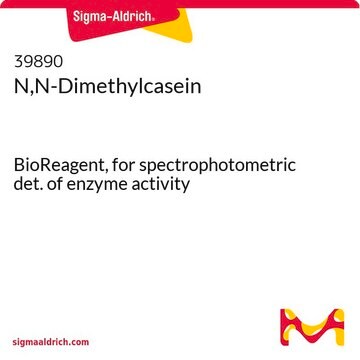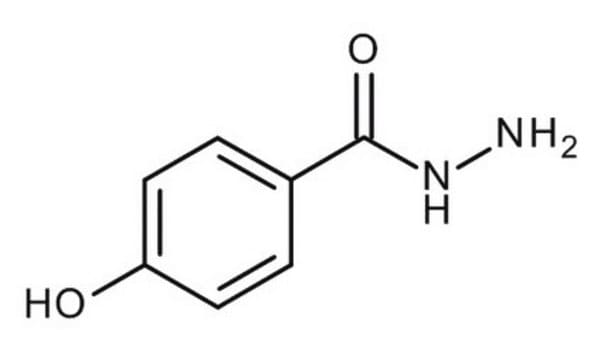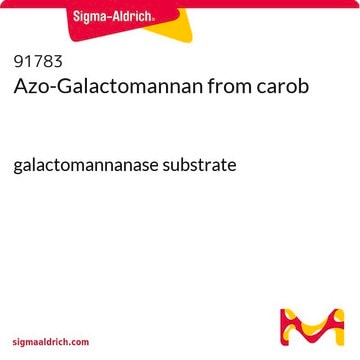H9882
4-Hydroxybenzhydrazide
powder, ≥97%
Synonyme(s) :
4-Hydroxybenzoic hydrazide, 4-Hydroxybenzoylhydrazine, p-Hydroxybenzoic acid hydrazide
About This Item
Produits recommandés
product name
4-Hydroxybenzhydrazide, ≥97%
Source biologique
synthetic
Pureté
≥97%
Forme
powder
Pf
264-266 °C (dec.) (lit.)
Solubilité
acetic acid: water (1:1): 25 mg/mL, clear, colorless to faintly yellow
Fluorescence
λex 360 nm; λem 425 nm (reacted with 5-hydroxymethyl-furaldehydezinc acetate)
Chaîne SMILES
NNC(=O)c1ccc(O)cc1
InChI
1S/C7H8N2O2/c8-9-7(11)5-1-3-6(10)4-2-5/h1-4,10H,8H2,(H,9,11)
Clé InChI
ZMZGIVVRBMFZSG-UHFFFAOYSA-N
Vous recherchez des produits similaires ? Visite Guide de comparaison des produits
Application
- for determining the concentration of maltose from starch digestion
- for analysis of sugars from fructan containing food hydrolysate
- in colorimetric assay for reducing sugar estimation from processed feedstuff
Actions biochimiques/physiologiques
Mention d'avertissement
Warning
Mentions de danger
Conseils de prudence
Classification des risques
Eye Irrit. 2 - Skin Irrit. 2 - STOT SE 3
Organes cibles
Respiratory system
Code de la classe de stockage
11 - Combustible Solids
Classe de danger pour l'eau (WGK)
WGK 3
Point d'éclair (°F)
Not applicable
Point d'éclair (°C)
Not applicable
Équipement de protection individuelle
dust mask type N95 (US), Eyeshields, Gloves
Certificats d'analyse (COA)
Recherchez un Certificats d'analyse (COA) en saisissant le numéro de lot du produit. Les numéros de lot figurent sur l'étiquette du produit après les mots "Lot" ou "Batch".
Déjà en possession de ce produit ?
Retrouvez la documentation relative aux produits que vous avez récemment achetés dans la Bibliothèque de documents.
Les clients ont également consulté
Protocoles
Enzymatic Assay of Invertase
Notre équipe de scientifiques dispose d'une expérience dans tous les secteurs de la recherche, notamment en sciences de la vie, science des matériaux, synthèse chimique, chromatographie, analyse et dans de nombreux autres domaines..
Contacter notre Service technique













